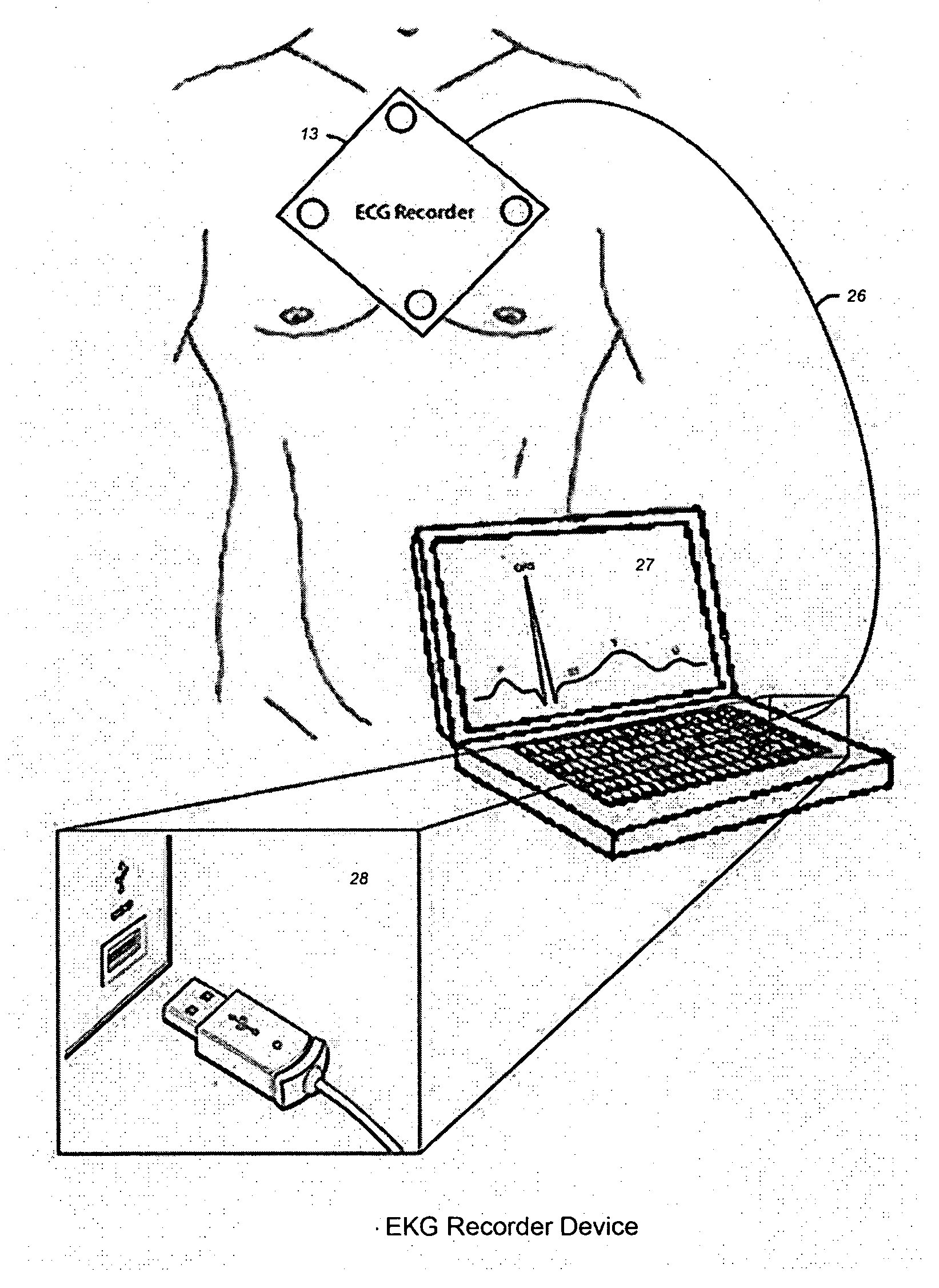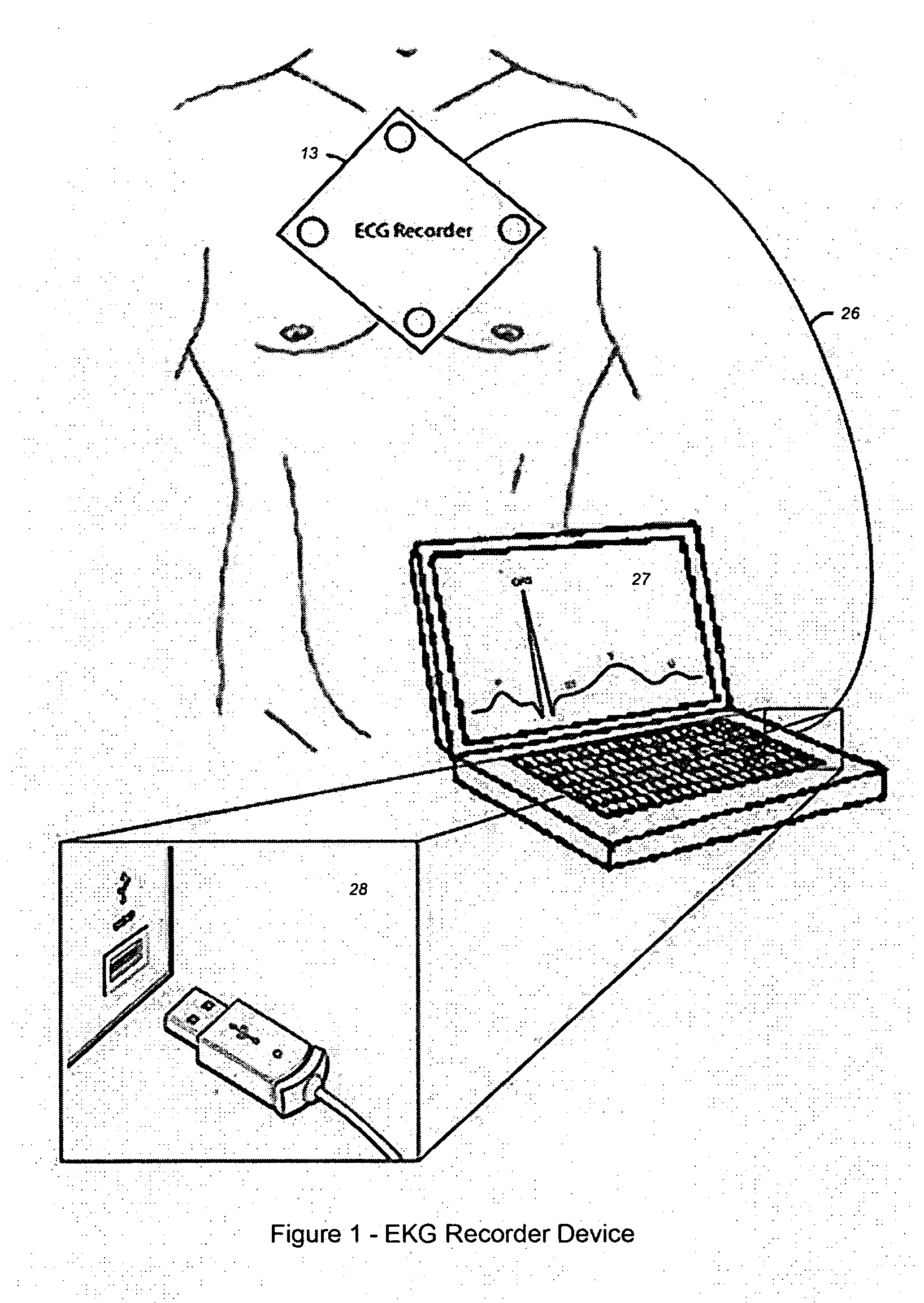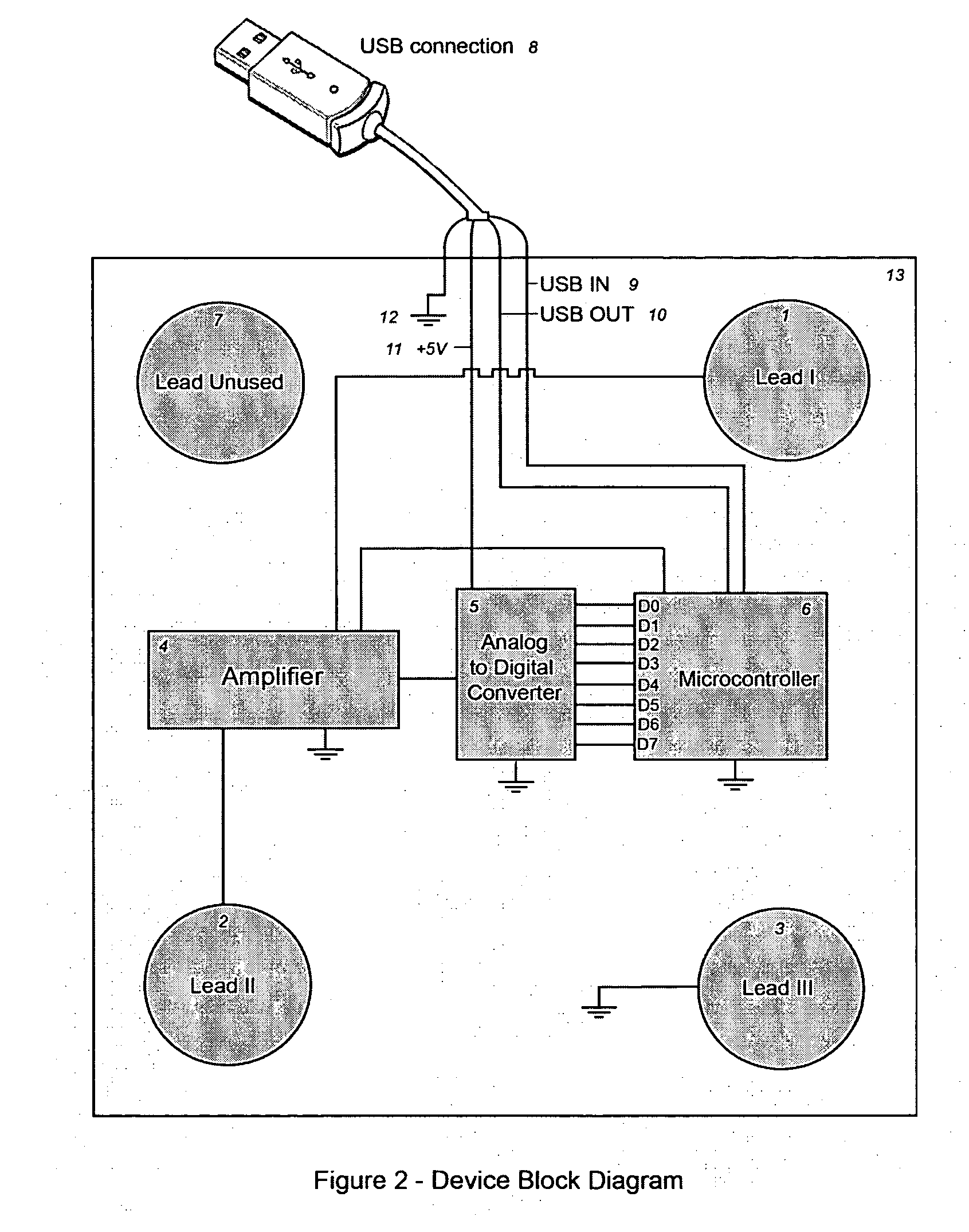Personal heart rhythm recording device
a heart rhythm and recording device technology, applied in the field of personal heart rhythm recording devices, can solve the problems of small and lightweight devices, not allowing patients to view their own heart rhythm, and expensive for patients
- Summary
- Abstract
- Description
- Claims
- Application Information
AI Technical Summary
Benefits of technology
Problems solved by technology
Method used
Image
Examples
Embodiment Construction
[0023] A schematic of the basic setup is shown in FIG. 1. Referring to FIG. 1, the EKG Recorder device 13 is placed on the patient's chest. The EKG Recorder detects the cardiac electromagnetic waves and sends them via a USB cable 26 to a personal computer 27. The personal computer 27 must have a USB input 28 in order for the device to transmit data. Once the data has been received by the personal computer 27, it is analyzed and displayed as a graph via a user-friendly software program.
[0024] The internal structure of the EKG Recording device is shown in FIG. 2. Referring to FIG. 2, there are three leads 1-3 that detect the electromagnetic signal propagating on the chest. Lead I 1 is used as the positive terminal and Lead II 2 is used as the negative terminal. Lead III 3 is used as the grounding reference. Each lead is made up of identical silver plated material. There is a fourth lead 7 that is used as ground. Lead I 1, Lead II 2, and Lead III 3 each connect to the 1000 gain amplif...
PUM
 Login to View More
Login to View More Abstract
Description
Claims
Application Information
 Login to View More
Login to View More - R&D
- Intellectual Property
- Life Sciences
- Materials
- Tech Scout
- Unparalleled Data Quality
- Higher Quality Content
- 60% Fewer Hallucinations
Browse by: Latest US Patents, China's latest patents, Technical Efficacy Thesaurus, Application Domain, Technology Topic, Popular Technical Reports.
© 2025 PatSnap. All rights reserved.Legal|Privacy policy|Modern Slavery Act Transparency Statement|Sitemap|About US| Contact US: help@patsnap.com



